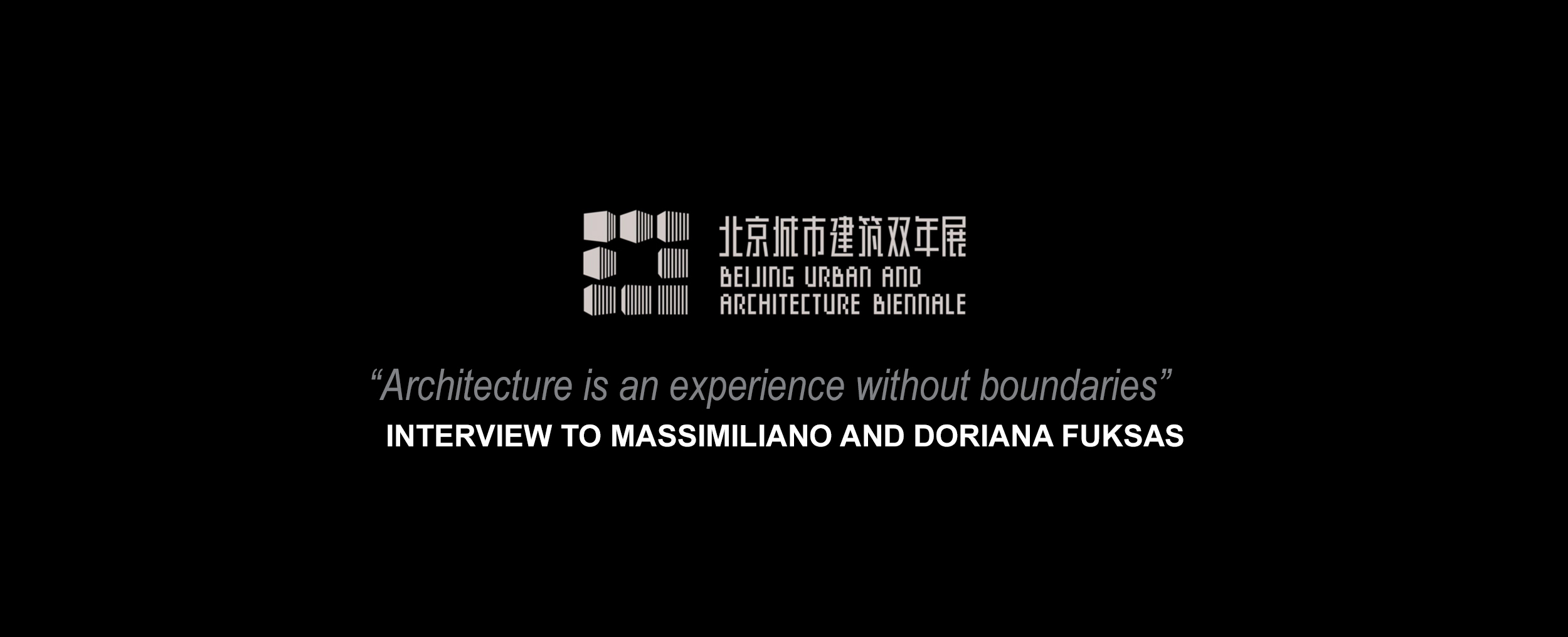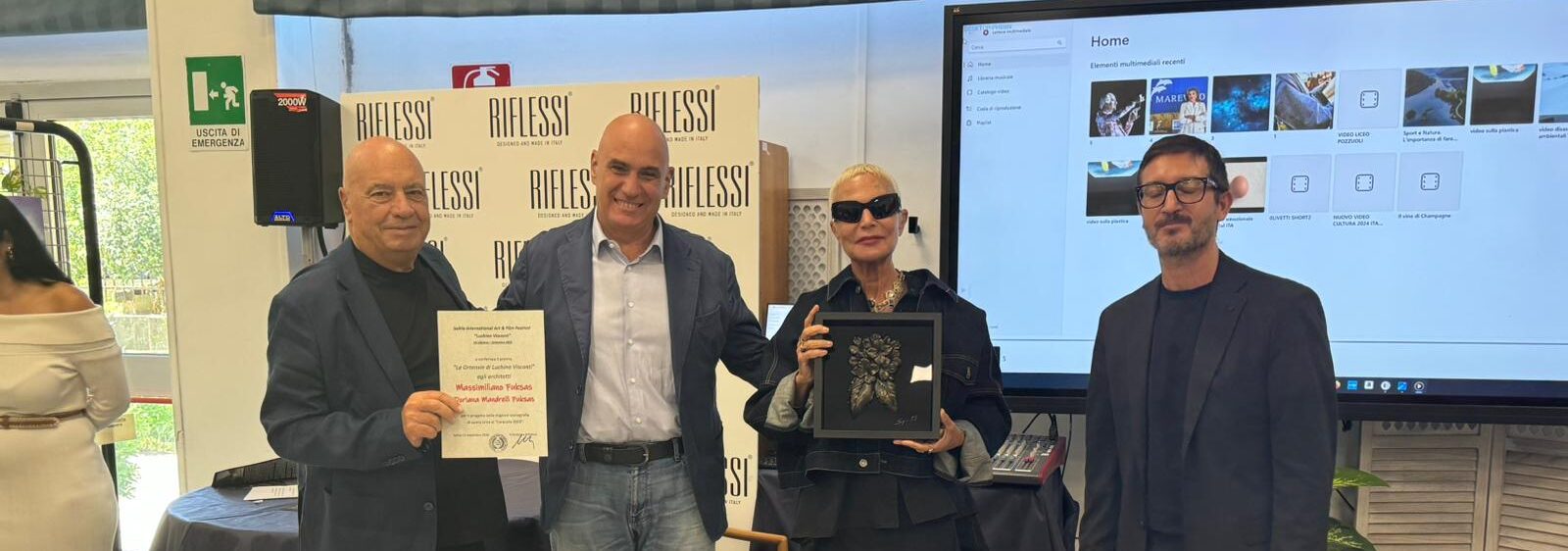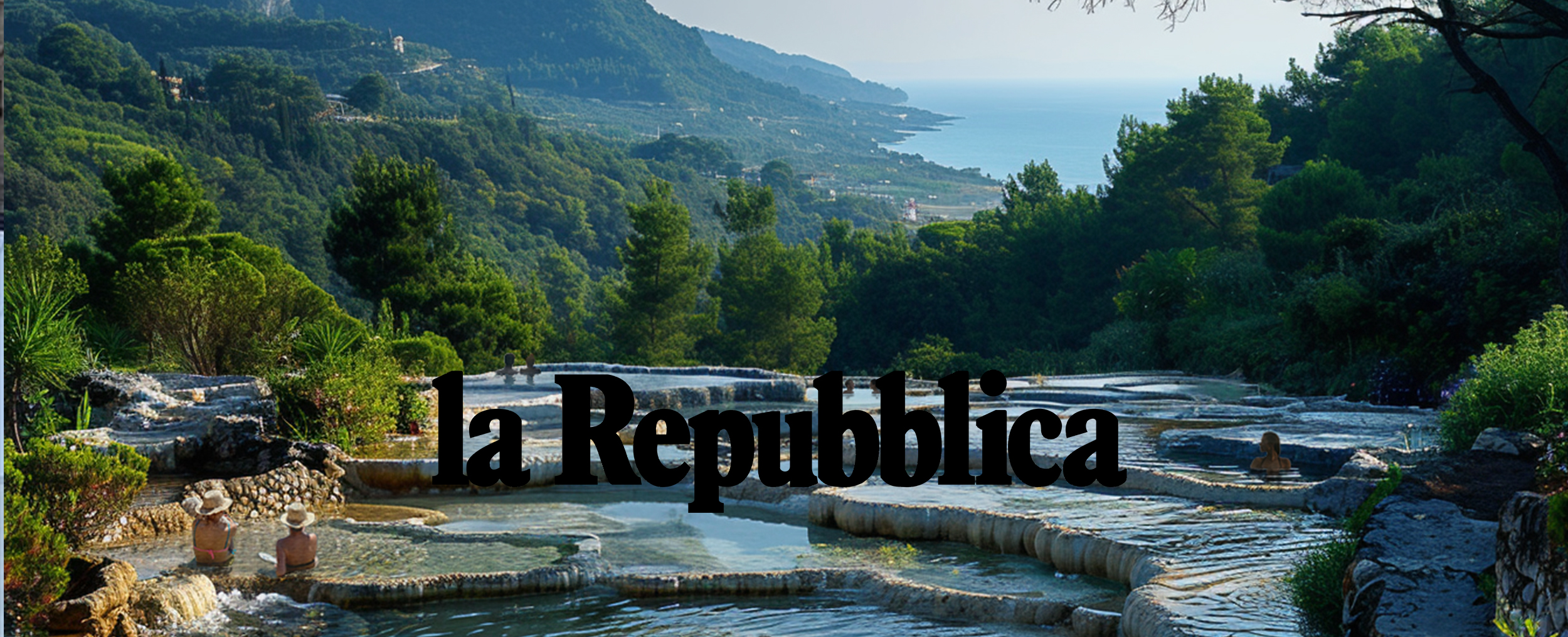
2020, September 29
“Architecture is an experience without boundaries” Interview to Massimiliano and Doriana Fuksas for the BUAB Beijing Urban Architecture Biennale 2020
Launched by the Organizing Committee of the Beijing Urban Architecture Biennale, the Beijing Urban Architecture Biennale invited more than 30 well-known experts and scholars from home and abroad in the fields of cities, architecture and related ones to conduct interviews around key words such as city, architecture, Beijing and the future to document their thinking on the important issues of the day, and to advocate and look forward to the responsibilities and future of the Beijing Urban Architecture Biennale.
“Architecture is an experience without boundaries” interview to Massimiliano and Doriana Fuksas
How does a building seek balance in complexity?
(Massimiliano Fuksas) I want to start with another question. We start with multidisciplinarity, and that’s the way to go. We architects used to be like creative artists, we were the leader of everything in the whole project, directing other staff. But now, especially at this time, we are becoming more aware of the multidisciplinary nature of architecture and our ability to work with more roles. I’ve been trying this all my life, working with artistic directors, with filmmakers, and now with scientists and even experts in artificial intelligence. They can always add something to the project and tell us something we didn’t know before.
The scale of architecture is one of the most important things about architecture from my point of view. For me, the scale is from a very small object to a huge one. We have worked in very different venues in many countries around the world. First of all, we should make clear where we are, whether in Washington, Tokyo, Moscow, Beijing or Shenzhen, we must first understand this, and then gradually deepen into the site and geographical conditions. It’s not that we have to start with geography, but that we can get information from it. We need information. Nature, countryside and landscape store message, and that every message can help us. The reason why we can switch freely between different project types is that we have been focusing on what is happening around us.
Is technology/art/or other the future of architecture?
(Massimiliano Fuksas) I think we’re working on a theme similar to ours of the 2000 Venice Biennale. What is “Less Aesthetics, More Ethics”? It’s not that we don’t like aesthetics, it’s because we feel we need more morality at this time, and we need to help others. Now there are a lot of people living is difficult, not in China, but in Western countries, in Africa. We need to do more, and it’s not enough just to be a good architect, especially for young architects. It’s not enough. We need to do more, not just emotionally. That’s where multidisciplinary works, we need different people, we need to understand each other. We’ve always been open architects, we’ve been thinking about finding solutions for the world, and now I think we’re all going to get involved in finding solutions for the world.
Where is the boundary of architecture?
(Massimiliano Fuksas) There is no boundary, no boundary at all, and the only boundary is human. We have to respect people, but we have to be humble forever, which may be a boundary, but the real boundary still does not exist. The whole world needs you to experiment, to understand, to explore. That is an experience. Architecture is an experience. Some people say architecture is about a specific time and space, and I disagree with it. I think architecture is flowing. In this flowing state, in this sea, you have to find the waves, find the right time, to experiment, to experience and to love.
What kind of city is Beijing?
(Doriana Fuksas) The whole of China is very much like Italy. For me, Chinese and Italians are very similar. We have a similar way of thinking and feeling. So it’s actually easier for us to work in China than in other countries. I love China, and my first experience of going to China is still like what just happened. It was in 1991, and in the next 30 years or so, we really saw the change of the country.
The last time I went, I had two or three days to get my translator to take me to the Great Wall outside Beijing. I talked to her that there were no bicycles in China anymore, and occasionally there were a few, but not as many as in the West. Then I told her that I had just bought a bike with my husband, and my translator was scared that she couldn’t work with me anymore. I was woudering how come we couldn’t work together as she was so pretty and so polite. To my surprise, she said, “You’ve all bought bikes, so are you getting poor? ” So that shows how China is changing.
China, whether it is Beijing, Shanghai, Shenzhen, and countless new cities, is full of energy. When you’re in China, you can feel that energy. The country is young. There are young people in their twenties working everywhere. The older people don’t want to leave, and still want to live there.
What kind of Biennenny does Beijing need?
(Doriana Fuksas) The 2000 Venice Biennale was the first Biennale to apply virtual means. We’ve never done a website before, and this is the first time. It’s the first time we’ve done a survey with the Internet, and you can’t do such a big Biennity until then, because no matter what, you only have two years to prepare, and the space for the exhibition is very large.
The most impressive thing is a continuous wall in Le Corderie dell’Arsenale, which is four hundred meters long and four meters high. It is all made by video artists, which depicts the disasters that the megacities brought us at that time: war, pollution, refugee problems, etc. I was thinking about it the other day. I thought we forgot one at the time, and that was the pandemic. We talked about all the disasters but we didn’t talk about this because everyone was confident that we would not encounter a pandemic again. But if you look at the poster of the 2000 Biennale, “Less Aesthetics, More Moral” is actually a virus, we call it “magma”.
So for Beijing, as I said before, we are very similar. You have destroyed history just like us. So we must pay attention and pay attention to what we are doing now, because everything we do will have an impact on the future. At the same time, we must pay attention to young people, young architects, because they are the future.
Date
September 29, 2020
Venue
BUAB Beijing Urban Architecture Biennale 2020 pilot exhibition
CREDITS
Production: Beijing Urban Architecture Biennale Organizing Committee
Producer: Beijing Architectural Design and Research Institute Co., Ltd.
Co-producer: Global Knowledge Lei Feng
Producer: Yan Zhiyuan, Gai Juan
Interview: Yan Zhiyuan
Translation: Yan Zhiyuan
Photography: Giorgio
Editing: Wang Fan
Editor: Gai Juan
Planning: Gai Juan, Jiang Bing, Meditation
Acknowledgement: Shen Jiacheng, Li Siyao, Sun Zhijian, Ru Jingyu, Cai Shiyu, Li Jiaye
Beijing Yuanguan brand, ZOO Firm, BEE Design Workshop
More events



